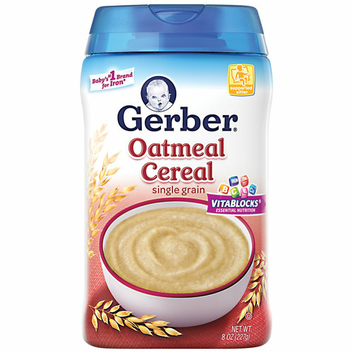How many servings of baby food per day
How much should my baby eat? A guide to baby food portions
- Community
- Getting Pregnant
- Pregnancy
- Baby names
- Baby
- Toddler
- Child
- Health
- Family
- Courses
- Registry Builder
- Baby Products
Advertisement
Wondering how much to feed your baby? This can be hard to figure out, especially when you're starting solids and most of your baby's food ends up on your little one or the floor. It's also difficult to determine how much an 8-month-old (or older baby) should eat – babies this age are more interested in solid foods but still get most of their nutrition from breast milk or formula. This visual guide to baby food portions can help you figure out how much your baby should eat at every stage.
Photo credit: Karla Martin for BabyCenter
How much should my baby eat?
Do you worry that your baby is eating too little or too much? Your baby will self-regulate her food intake based on what their body needs, so let their appetite be your guide.
It's helpful to have a reference point, however. Here are photos of how much solid food a baby typically eats in a day. You can also ask your baby's doctor for feeding advice.
This visual guide shows:
- Portions for infants who are new to solids (typically 4 to 6 months)
- Two sample meals for a younger baby (6 to 8 months)
- Three sample meals and two snacks for an older baby (8 to 12 months) from a menu developed by the American Academy of Pediatrics (AAP)
Your little one may eat less or more than what's shown here. Your job is to provide a variety of healthy foods at regular intervals without pressure, and their job is to decide what and how much to eat.
Photo credit: iStock.com / UntitledImages
Watch for signs your baby is full
Lots of factors – including activity level, growth spurts or plateaus, illness, and teething – will affect your baby's appetite, which can vary daily.
End feeding when they signal that they're done. Signs of being full include:
Signs of being full include:
- Turning their head away
- Refusing to open their mouth for another bite after they've swallowed (resist the urge to encourage your baby to have one last spoonful)
- Leaning back in their chair
- Playing with the spoon or food rather than eating
Photo credit: Karla Martin for BabyCenter
How much a 4- to 6-month-old should eat
When your baby is developmentally ready for solids, typically around 4 to 6 months, talk to their doctor about introducing solid foods. The first bites are mostly about them getting used to the idea of having something different in their mouth.
- Start with a very small amount, 1 to 2 teaspoons, of a single-ingredient puree.
- Gradually increase to 1 to 2 tablespoons of food once a day.
- Follow your baby's fullness cues.
Popular first foods include pureed mango, banana, chicken, turkey, beef, peas, sweet potatoes, and infant cereal. It's up to you what food to start with, but wait 3 to 5 days between introducing each new food to make sure your baby doesn't have an allergic reaction or food intolerance. (And remember, no cow's milk or honey until age 1.)
It's up to you what food to start with, but wait 3 to 5 days between introducing each new food to make sure your baby doesn't have an allergic reaction or food intolerance. (And remember, no cow's milk or honey until age 1.)
Photo credit: Karla Martin for BabyCenter
How much a 6- to 8-month-old should eat
As your little one gets more comfortable with solids, you can increase the frequency of meals and variety of food.
- Transition from one to two meals a day, typically by 8 months.
- Over time, add a second food to each meal. The photo above is an example of a meal with two foods.
- Once you've worked up to two meals with two foods each, aim for a balance of proteins, vegetables, fruits, and grains in their daily diet.
- Whenever you introduce a new food, start with a very small amount, a teaspoon or two, to allow your baby to get used to its flavor and texture.
- Start with a soupy consistency. Gradually add more texture as their eating skills improve.
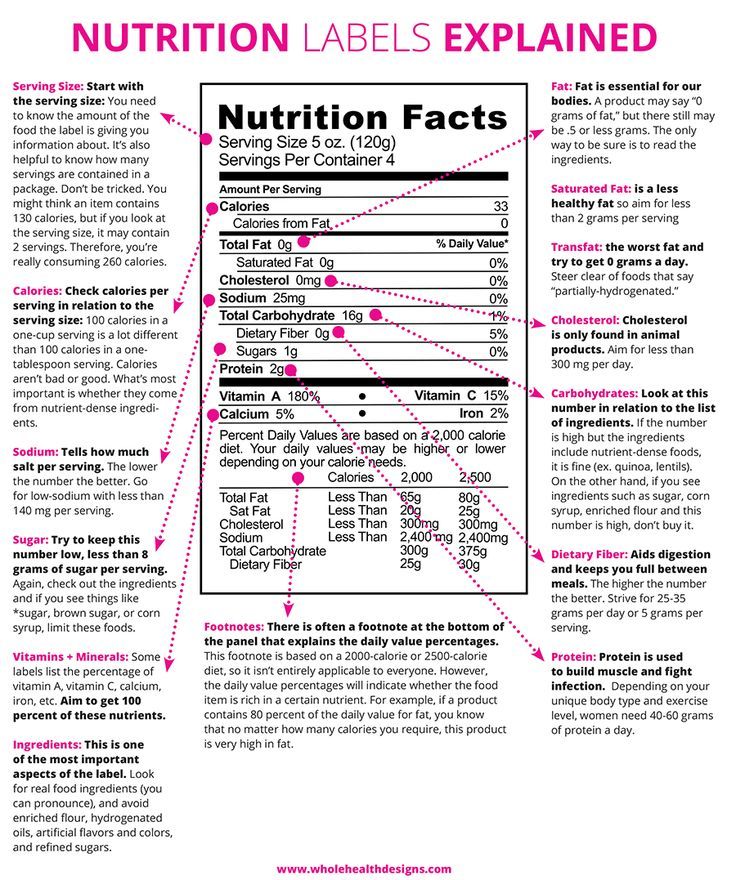
Expect their intake of breast milk or formula to go down. They'll start drinking less of it as they eat more solid foods. Provide healthy options at mealtimes, and let them choose how much to eat.
Note: The jars in all photos are standard 4-ounce baby food jars.
Photo credit: Karla Martin for BabyCenter
Breakfast for a younger baby (6 to 8 months)
Cereal and fruit make an easy combination for a morning meal.
Grain: Iron-fortified, whole-grain infant cereal is a popular first grain. At 6 months, a typical daily portion of infant cereal mixed with breast milk or formula might be 2 to 3 tablespoons, increasing to 4 to 8 tablespoons (1/4 to 1/2 cup) by 8 months. (It's best to avoid rice cereal, though.)
Fruit: Babies love the natural sweetness of fruits like pears, apples, berries, prunes, and stone fruits. Between 6 and 8 months, a baby will typically transition from about 2 to 3 tablespoons of fruit puree a day to 4 to 8 tablespoons (1/4 to 1/2 cup) of mashed or minced fruit.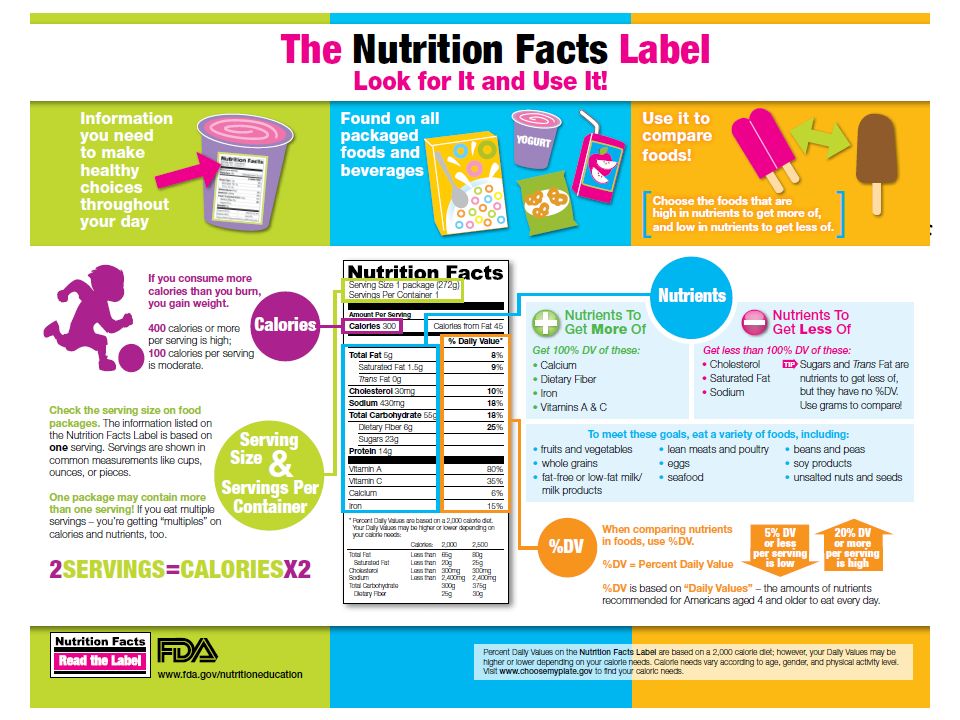
Photo credit: Karla Martin for BabyCenter
Dinner for a younger baby (6 to 8 months)
If you serve a grain and fruit in the morning, consider offering a protein-rich food and vegetable later in the day. Your child may eat more or less than the amounts shown.
Protein: A baby might transition from eating 1 to 2 tablespoons of meat puree at 6 months to 2 to 4 tablespoons at 8 months, for example. Other good protein sources include cheese, unsweetened plain whole-milk yogurt, tofu, beans, and lentils.
Vegetables: Between 6 and 8 months, a baby will typically transition from about 2 to 3 tablespoons of vegetable puree a day to 4 to 8 tablespoons (1/4 to 1/2 cup). Try classic favorites like carrots, spinach, or butternut squash, as well as less traditional first foods such as parsnips, beets, or asparagus.
As your child's eating skills improve, gradually add more texture by dicing or mincing foods.
Photo credit: Karla Martin for BabyCenter
How much an 8- to 12-month-old should eat
By 8 months or so, your baby is likely getting the hang of eating and needs to eat more calories to support their growing body.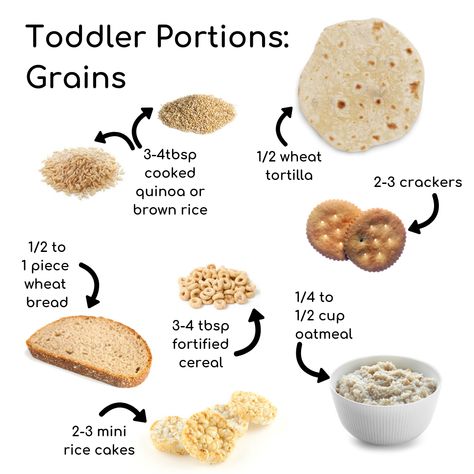 But since their little belly can't hold a lot of food, they'll need to eat more often. Every baby is different, but this may be a good time to try offering a third solid food meal.
But since their little belly can't hold a lot of food, they'll need to eat more often. Every baby is different, but this may be a good time to try offering a third solid food meal.
During this period:
- Continue to give your baby breast milk or formula.
- Add morning and afternoon snacks. (Some babies this age are happy with breast milk or formula as their snack, while others gravitate toward solid foods.) Once you've added a third meal and snacks, your baby will be eating or drinking something about every two to three hours.
- Continue to aim for a mix of proteins, vegetables, fruits, and grains.
- Introduce coarser and chunkier textures, for example, by dicing or mincing food instead of pureeing it, and graduate to soft finger foods as your baby's eating skills improve.
- Avoid foods with added sugars. Check the Nutrition Facts label on packaged foods, and try to steer clear of foods that list 1 gram or more of "Added Sugars.
 "
" - Provide healthy options, and let your baby choose how much to eat.
To visualize daily portions for an 8- to 12-month-old, check out the following photos of a typical day's menu for a baby this age, developed by the AAP.
Your child may eat more or less than these amounts. If you're concerned about how much your baby is eating, talk to their doctor for advice.
Photo credit: Karla Martin for BabyCenter
Breakfast for an older baby (8 to 12 months)
The AAP sample menu for a baby 8 to 12 months features a breakfast consisting of:
- 4 to 8 tablespoons (1/4 to 1/2 cup) whole-grain infant cereal mixed with formula or breast milk
- 4 to 8 tablespoons (1/4 to 1/2 cup) diced fruit
Note: This is an example. Your baby may eat different foods and amounts.
Photo credit: Karla Martin for BabyCenter
Morning snack for an older baby (8 to 12 months)
The AAP sample menu for a baby 8 to 12 months features a morning snack consisting of:
- 4 tablespoons (1/4 cup) diced cheese or cooked vegetables
Note: This is an example of a morning snack, which babies typically add sometime between 8 and 12 months. Your baby may eat different foods and amounts.
Your baby may eat different foods and amounts.
Photo credit: Karla Martin for BabyCenter
Lunch for an older baby (8 to 12 months)
The AAP sample menu for a baby 8 to 12 months features a lunch consisting of:
- 4 to 8 tablespoons (1/4 to 1/2 cup) unsweetened plain whole-milk yogurt or cottage cheese, or minced meat
- 4 to 8 tablespoons (1/4 to 1/2 cup) diced or mashed yellow or orange vegetable
Note: This is an example. Your baby may eat different foods and amounts.
Photo credit: Karla Martin for BabyCenter
Afternoon snack for an older baby (8 to 12 months)
The AAP sample menu for a baby 8 to 12 months features an afternoon snack consisting of:
- 4 tablespoons (1/4 cup) diced fruit or unsweetened plain whole-milk yogurt
- 1 whole-grain teething biscuit or cracker
Note: This is an example of an afternoon snack, which babies typically add sometime between 8 and 12 months.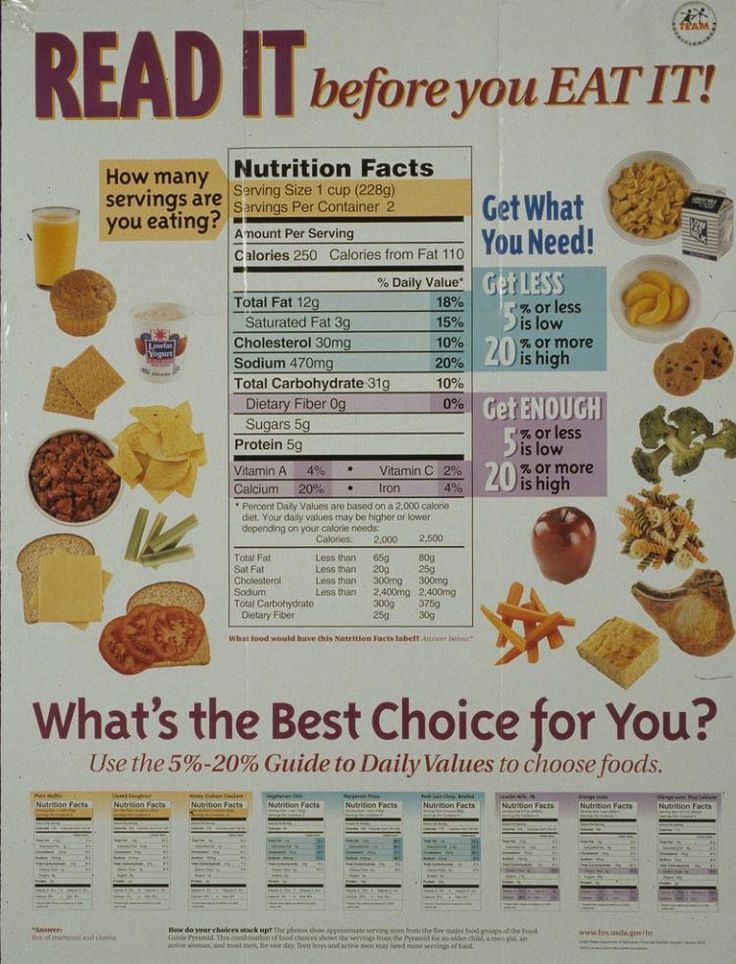 Your baby may eat different foods and amounts.
Your baby may eat different foods and amounts.
Photo credit: Karla Martin for BabyCenter
Dinner for older baby (8 to 12 months)
The AAP sample menu for a baby 8 to 12 months features a dinner consisting of:
- 4 tablespoons (1/4 cup) minced or ground poultry or meat, or diced tofu
- 4 to 8 tablespoons (1/4 to 1/2) cup diced, cooked green vegetable
- 4 tablespoons (1/4 cup) noodles, pasta, rice, or potato
- 4 tablespoons (1/4 cup) diced fruit
Note: This is an example. Your baby may eat different foods and amounts.
Photo credit: Karla Martin for BabyCenter
How much should my baby drink once they start eating solids?
Breast milk or formula will fully meet your child's hydration needs until they're about 6 months old. They may start drinking less as solid foods become a bigger part of their diet. Here are typical daily amounts by age – your baby's intake may be different, however.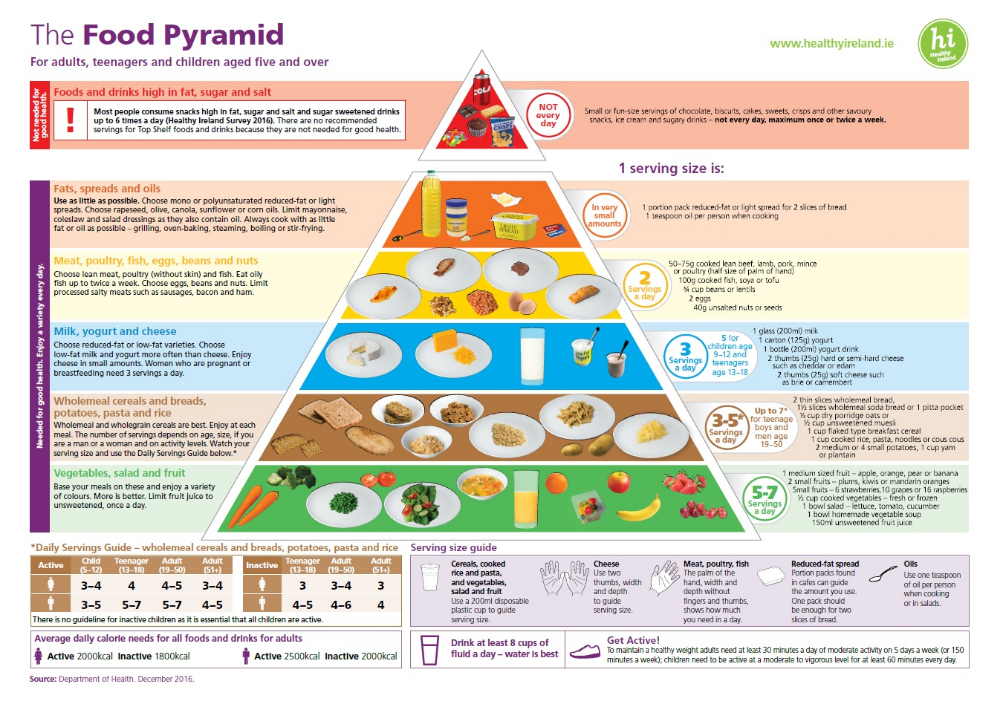
6 to 8 months: 24 to 32 ounces of formula, or continued breastfeeding on demand
8 to 12 months: 24 ounces of formula, or continued breastfeeding on demand
Water: You can offer your baby water once they start eating solids, but let them self-regulate how much they drink. The Centers for Disease Control and Prevention (CDC) recommends giving babies who are 6 to 12 months old 4 to 6 ounces of water a day, but what your baby decides to drink may vary. They may drink more on a hot day, for example.
Avoid juice: Juice isn't recommended for babies younger than 12 months.
Photo credit: iStock.com / SDI Productions
Your baby has the final say
Keep in mind that these portions are an estimate. The truth is, every baby is different, and there's no set amount of food that's appropriate for every baby at every stage.
If you're worried about whether your baby is eating enough – or too much – the best advice is to look for and respond to signs that your baby is full.
Your baby's doctor will chart their weight gain at regular intervals. If the doctor sees a consistent growth curve and doesn't have other concerns, your baby is most likely eating the right amount of food.
Hungry for more?
Age-by-age guide to feeding your baby
The 10 best foods for babies
The worst foods for babies
Using spices and seasoning in baby food
Elizabeth Dougherty
Elizabeth Dougherty is a veteran parenting writer and editor who's been contributing to BabyCenter since 2015. She's an intrepid traveler, devoted yogi, and longtime resident of Silicon Valley, where she lives with her husband and son.
Advertisement | page continues below
How Much Baby Food Your Baby Should Be Eating- A Guide
You’re wondering about the above statement aren’t you? Ask the vast majority of pediatricians and they will all say, “Feed your baby as much as your baby will eat”.
One of the caveats when feeding your baby solid foods is that that you ensure that your baby is still receiving proper amounts of breast milk and/or formula. Solid foods in the early stage are meant for practice. Solids are not meant to provide for baby’s nutrition as breast milk and/or formula are.
Solid foods in the early stage are meant for practice. Solids are not meant to provide for baby’s nutrition as breast milk and/or formula are.
How much solid food a baby will be eating depends on a variety of different things.
Don’t forget that your baby is a little human being, and like all of us, she has her own appetite. This will influence to how much solid foods she will be eating. As with adults, some babies will eat more than others due to their individual appetites. Below are a few key points to remember when feeding your baby.
- A baby who began solid foods at 4 months of age will most likely be eating more solid foods than the baby who began to eat solid foods at 6 months old.
- A baby who is eating soft diced foods as beginner foods may seem to eat less than the baby who is being spoon-fed purées.
- A baby who is ill or teething may eat less than what has been typical for a few days and then suddenly the typical appetite comes roaring back.

- An infant who is busy exploring the carpet or the new soft-book she has received may be miffed when she is put into a high chair and offered food.
The natural slow down of growth that babies go through will also influence how much they eat. They may be ravenous for a few days or a week or two and then suddenly, they are barely eating. Babies who are coming out of a growth spurt will tend to eat less than they were during the growth spurt.
How do I know if my baby is eating enough solid food?
As all pediatricians will tell you ” Your baby will never starve himself or herself! ” The majority of healthy babies will eat just the right amount of foods that they need. Resist the urge to offer “just one more bite” when baby indicates she’s finished. You do not want to accidentally override your baby’s developing ability to self-regulate his or her feeding by continuing to try and feed your baby. It is important to pay close attention to your baby’s cues as your baby’s feeding patterns will change daily and may be affected by the goings-on around him.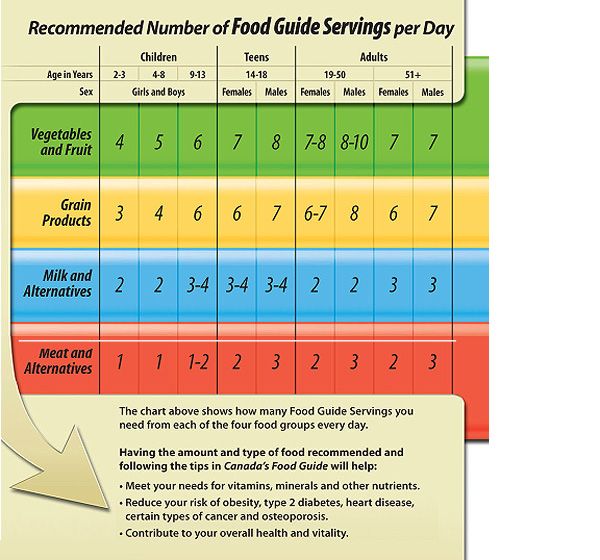
Offering a well balanced diet of solid foods will help ensure that your baby is eating the right amount of the right nutritious foods.
Example feeding “schedule” of solid foods
REMEMBER: 1 ounce equals approximately 2 tablespoons
Before 4 Months:- According to the CDC, babies before 4 months of age should not be fed solid baby foods. Infants should be able to sit up on their own and take food off the spoon before being introduced to solids
- Why can’t we give baby younger than 4 months solids? According to Dr. Alice Kuo of UCLA, “Introducing solid foods early means that the baby gets less breast milk over the course of their infancy, and that decreases the ability to get optimal benefits, like protection against infection,”
What to Feed Baby:
- Breast milk or formula
Breastfeed every 1-3 hours or Formula 18-40 ounces
4-6 Months:
If baby can sit up on their own and still seems hungry after breastfeeding, baby may be ready to start eating solids! Baby should be able to hold their head up, close their mouth around a spoon and “move” the food to the back of their mouth.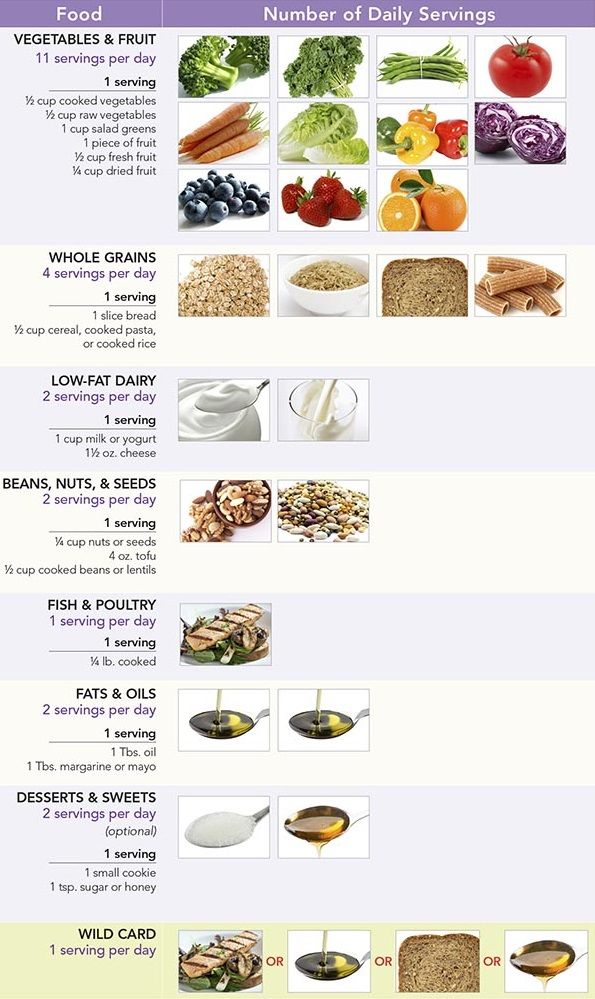
What to Feed Baby:
- Breast milk or formula AND
- 1-3 tablespoons of food at 1 or 2 “meals”
Click here to learn what foods you can introduce to a 4-6 month baby
6-8 Months:
Formula and/or Breast Milk is still most important at this age and stage. Babies in this range may be just starting solids so the above for 4-6 Months would apply. Some babies may be eating up to 8 ounces of solid foods between 2-3 “meals” during a day.
What to Feed Baby:
- Breast milk or formula AND
- Foods in this chart for solids OK to give baby 6-8 months, 2-3 “meals” a day
Click here to learn what solid foods you can introduce to a 6-8 month baby
8 to 10 months:
Many babies will be eating 3 “meals” per day at this stage; including a grain, fruit, veggie and a meat or protein source such as eggs.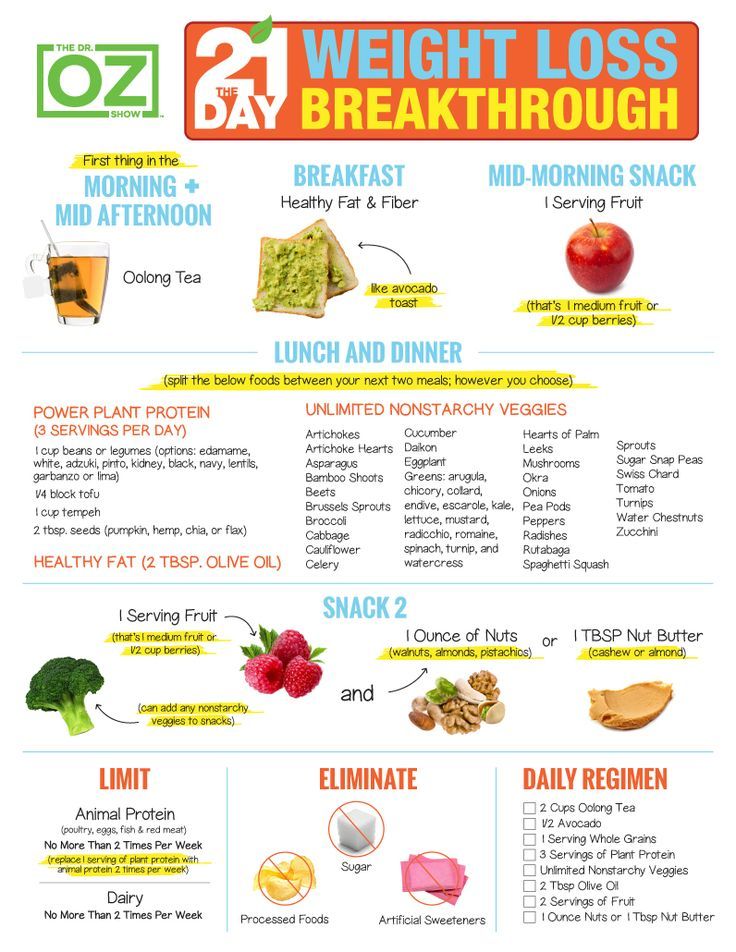
Again, pay close attention to your baby’s cues as your baby’s feeding patterns will change daily and may be affected by the goings-on around him. Your baby will eat just the right amount for YOUR baby.
What to Feed Baby:
- Breast milk or formula AND
- Foods in this chart for solids OK to give baby 6-8 months, 3 “meals” a day
Click here to lean what solid foods you can introduce to a 8 to 10 month baby
10 to 12 months:
Many babies will be eating 3 “meals” per day at this stage; including a grain, fruit, veggie and a meat or protein source such as eggs.
Again, pay close attention to your baby’s cues as your baby’s feeding patterns will change daily and may be affected by the goings-on around him. Your baby will eat just the right amount for YOUR baby.
What to Feed Baby:
- Breast milk or formula AND
- Foods in this chart for solids OK to give baby 10-12 months, 3 “meals” a day
Click here to lean what solid foods you can introduce to a 10 to 12 month baby
Here are a few things to watch for to ensure that you are not over or under feeding your baby:
Signs that baby may want to continue to eat- Leaning in for the spoon
- Opening the mouth
- Grabbing for food and trying to put it in the mouth
- Closing of the mouth as the spoon comes close
- Spitting out the food that is being fed
- Turning the head away as the spoon comes closer
A healthy well-fed baby should be producing wet diapers regularly as well as producing a bowel movement or two during the day.
Ensure that you take your baby to the well-child visits as scheduled so that your pediatrician may weigh and measure baby to ensure that your baby has good sustained growth.
If you are ever uncertain about the foods and the amount of solid foods you are feeding your baby, always consult your baby’s pediatrician. Your pediatrician should be able to assist you in validating your feeding routines and also help allay your fears.
Remember, always consult with your pediatrician regarding introducing solid foods to your baby and specifically discuss any foods that may pose allergy risks for your baby.
No two babies will eat the exact same amounts (or foods!) The amount that each eats is just right for that baby!
Suggested Daily “Milk” Intakes for Babies age 0 to 12 months
- 0-3 Months of age:
Breastfeed every 1-3 hours or Formula 18-40 ounces - 4-5 Months of age:
Breastfeed every 2-4 hours or Formula 24-45 ounces - 6-8 Months of age:
Breastfeed every 3-4 hours or Formula 24-37 ounces - 9-12 Months of age:
Breastfeed every 4-5 hours or Formula 24-31 ounces
Whole Cow Milk, as a drink, should not be introduced until 12 months of age.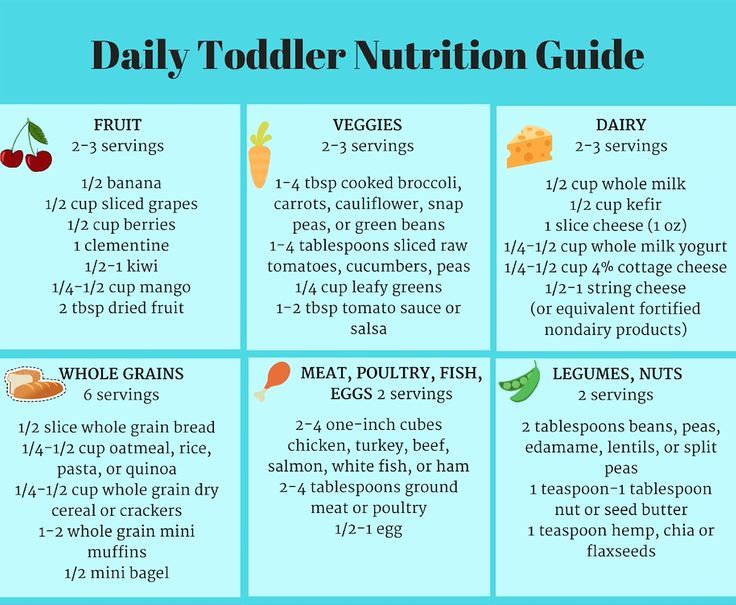 Learn about Introducing Yogurt and Feeding Cheese to your baby.
Learn about Introducing Yogurt and Feeding Cheese to your baby.
Table compiled from Merck Source
Follow Your Baby’s Cues When Feeding Your Baby Solid Foods
Following your baby’s cues during feeding time will ensure that your baby is eating the proper amounts of food for him or her.
There is no “set-in-stone” guideline or chart of exactly how many jars of baby food or how many 8 ounce bottles of formula each baby should be receiving. This is simply because each and every baby is different. Babies will eat as much food and drink as much breast milk and/or formula as they need.
For example: You may wonder how it is possible that your friend’s 7 month old baby is eating 2 whole jars of baby food (8-9 oz) in one day while your 7 month old baby barely manages to eat 3 or 4 baby food cubes (3-4 oz) of food per day. You may also wonder why your baby nurses every 2 hours at 7 months old while your friend’s baby may only nurse every 3 or 4 hours. Again, each baby has different food and milk needs and these needs are just right for the individual baby.
Again, each baby has different food and milk needs and these needs are just right for the individual baby.
Read More About Solid Foods for Baby Food
Ask the vast majority of pediatricians and they will all say, “Feed your baby as much as your baby will eat”.
- Is My Baby Ready for Solid Foods?
- Baby Food Combinations
- Baby Food Allergies
- Iron and Your Baby
- Yogurt for Baby
- Travel with Homemade Baby Food
- Constipation and Your Baby
Remember, always consult with your pediatrician regarding introducing solid foods to your baby and specifically discuss any foods that may pose allergy risks for your baby.
This site complies with the HONcode standard for trustworthy health information:
verify here.
SHARE ON FACEBOOK SHARE ON PINTEREST
Union of Pediatricians of Russia
Nutrition for children from 1 to 3 years of age
The period from 1 to 3 years of life is a crucial stage in the transition to an adult type of nutrition, which has certain features. In order to ensure that all the necessary nutrients enter the child's body and at the same time prevent an excess of individual nutrients, nutrition should be balanced and varied.
In order to ensure that all the necessary nutrients enter the child's body and at the same time prevent an excess of individual nutrients, nutrition should be balanced and varied.
The daily amount of food for children aged 1 to 1.5 years should be 1000-1200 g, from 1.5 to 3 years - 1200-1500 g, the amount of food in one feeding should not exceed 300-350 ml. The diet consists of three main meals per day and two snacks. It is considered optimal when breakfast is 25% of the total energy density of the diet, lunch is 30–35%, dinner is 20%, and additional meals are about 10%. In general, the child can eat the same food as the rest of the family.
In the diet of a child of 1–3 years of age , must be present daily: meat of animals or poultry, dairy and sour-milk products, vegetables, fruits, bread, cereals, vegetable and butter; fish and eggs are included in the diet 2-3 times a week.
Cereal products: bread - 2-3 servings per day, cereals and side dishes - 1 time per day
Fruit and/or vegetables: at least 5 times a day
Dairy products: at least 3 servings per day (including those used to make cereals, yoghurts, fermented milk drinks, cottage cheese, infant formula or breast milk).
Domestic pediatricians recommend, when compiling a diet for children aged 1–3 years, preference should be given to specialized children's dairy products of industrial production that meet high quality requirements and safety indicators for this age. Most children's dairy products are additionally enriched with vitamins and/or minerals and other biologically active components, taking into account the physiological needs of children of this age. At the same time, in foreign recommendations, children over 1 year old are offered the gradual introduction of whole cow's milk, which is rich in fats necessary for proper growth and development, the absorption of vitamins A and D, the development of the brain and nervous system of the child.
Meat dishes: 2-3 times a day
Fish dishes: 2-3 servings per week
Eggs: 2-3 per week
Dietary fats: 3-4 teaspoons of butter and/or vegetable oils per day
When cooking, use the minimum amount of salt and sugar, and do not add them to industrial products..png)
Offer your child a variety of foods and let them choose for themselves. Children love to eat on their own, so if possible, offer food that the child can eat with their hands.
It is important to remember that a baby can choke on pieces of food, so whatever you give your baby should be crushed or cut into small pieces that can be easily chewed.
Do not give to a small child: nuts, whole grapes, cherry tomatoes (unless quartered), whole carrots, seeds (such as pumpkin or sunflower seeds), round candies, legumes, raisins, because a child can eat them choke.
Also in the diet of children of the first 3 years of life should not be present:
Mushrooms; canned snacks, pickled vegetables and fruits
Home canned food
Dry concentrates for side dishes
Hot sauces, mustard, horseradish, pepper, vinegar, mayonnaise
Natural coffee
Juices and drinks in the form of dry concentrates; sweet carbonated drinks
Products containing food additives (flavorings, dyes of artificial origin, including chewing gum), popcorn
Combined fats; cakes and pastries
It is important to remember that children of this age should not be given too spicy and spicy foods.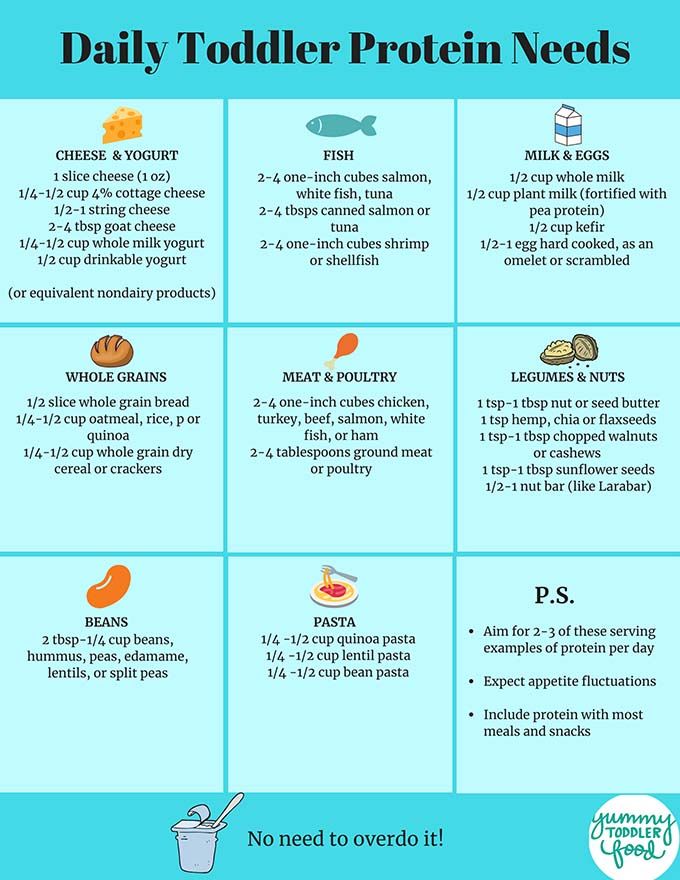
Serving size for children from 0 to 3 years. Steps to health. Social project for children and parents, pediatricians
home > Food. Gastroenterology. > The introduction of complementary foods >
With food, the child's body receives the necessary energy, nutrients that provide strong immunity, endurance to stressful situations and environmental factors. Therefore, mothers often ask questions, does the baby eat enough , what foods can be given and how much should the child eat per feeding? Let's see.
Of course, it is best not to give up breast milk , as it is the most suitable for the digestive system and contains many nutrients.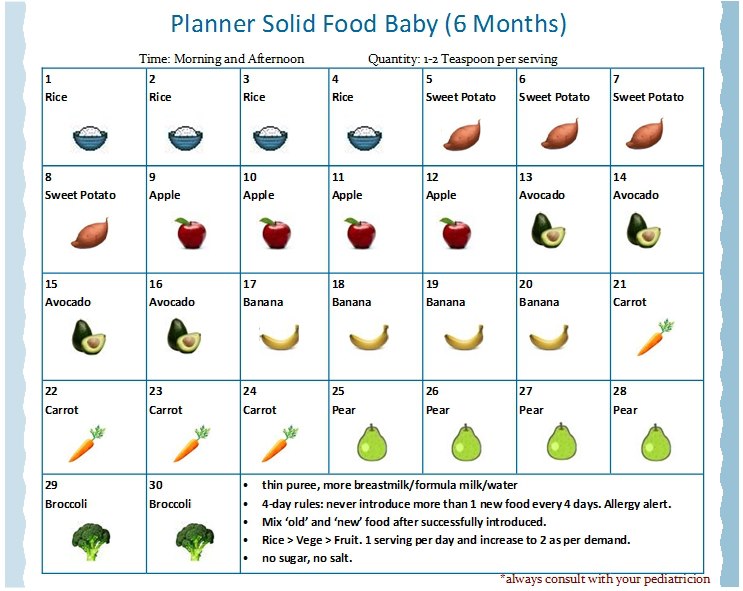
Breastfed children do not require strict, regular calculation and control of the amount of milk needed or consumed. But if the child is bottle-fed , then up to the age of 10 days one serving is calculated as follows:
age in days times 10 .
At the age of from 10 days to 2 months the volume of serving per day is 600–900 ml i.e. 1/5 of body weight per day 8-12 times feedings.
In the period from 2 to 4 months - 1/6 body weight ( 800-1000 ml ), 7-8 feedings .
At the age of 4 to 6 months - 1/7 body weight ( 900-1000 ml ) divided by 5-6 feedings .
And finally, from 6 months to 1 year - 1/8-1/9 body weight (portion size 1000-1200 ml ), 5 feedings .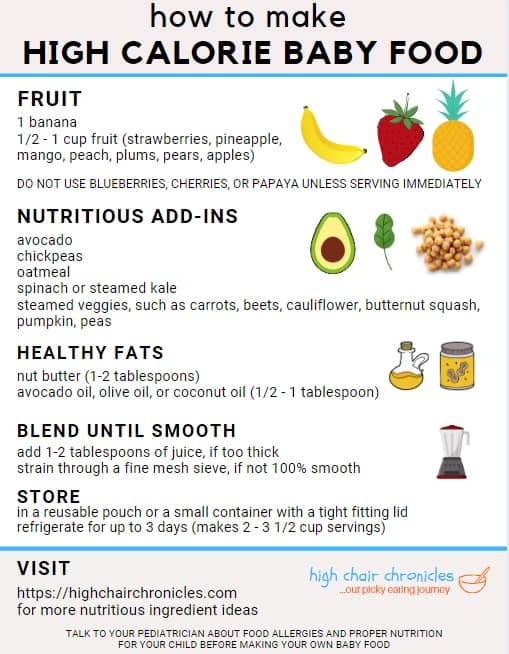
Tea, water, juices are not included.
How much should a child eat: timing of the introduction of complementary foods
In cases where the baby is artificial , complementary foods begin with 5.5–6 months in the amount of 1 teaspoon per day, and then increase the portion.
Within one week, the total is adjusted to 150 g, replacing one feeding with formula for complementary foods; it is desirable that this be the second feeding. This means that on the morning of the first feeding, the baby receives formula, and on the next - complementary foods. This sequence is necessary to assess the child's response to complementary foods. The first is recommended to introduce vegetable puree or cereal, depending on the characteristics of the child.
From 6 months introduce complementary foods to children who are breastfeeding .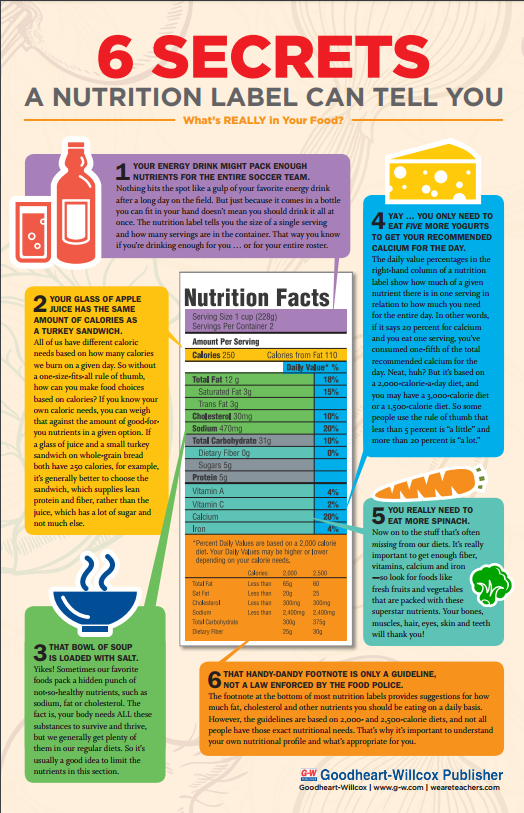
Feeding table
How much should a child aged 1 to 3 eat
The amount of food consumed per day is 1200-1400 ml. Feed the baby at the same time it contributes to normal digestion
Dishes - only pureed, boiled or stewed . Protein-rich foods are prepared for breakfast and lunch, cereals and dairy products for dinner.
Gradually, you should switch from liquid pureed food to denser, pieces.
Forbidden: all hot spices and spices, sausages, sausages, sausages, duck meat, lard, fatty pork, lamb, radish, radish, garlic.
Not recommended:
- up to 2 years - all types of tea, coffee, because. they contain phenolic compounds that bind iron and prevent it from being absorbed;
- up to 3 years - chocolate, because. it often causes allergic reactions and has a stimulating effect on the child's nervous system.
Feeding the baby should be carried out at a common table with all family members to improve appetite, master the skills of independent eating.



